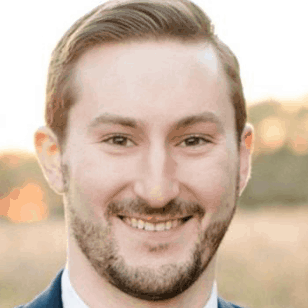
By Oronde Drakes, Eric Tate, Jayton Rainey, and Sam Brody
The structure of federal disaster recovery programs can marginalize households that have limited resources and create disproportionate recoveries in the areas that can least afford them. Locations with more marginalized people are likely to become economically worse off after disaster, while areas with more privileged populations are poised to receive greater benefits from disaster assistance.
Households rely on insurance, personal savings, and social capital to overcome the damage, job loss and impacts that accompany disaster. Those with fewer resources, however, are less able to meet such challenges. Short-term assistance can improve household coping capacity, but this assistance is not distributed equitably—places with minority and lower income populations receive disproportionately low disbursements compared to White communities.
To better understand how equitable disaster assistance programs are, we explored the population characteristics of places that received short-term assistance from the Federal Emergency Management Agency (FEMA) Individuals and Households Program (IHP). The program is the largest component of FEMA Individual Assistance, the agency’s primary short-term, household-level assistance program. IHP focuses on meeting immediate, basic needs that aren’t covered by insurance or other resources, but our research, which examined data from the contiguous 48 states from 2006 to 2018, found that IHP may not be reaching the places that most need federal aid to manage the impacts of disasters.
Fair Disbursement of Disaster Assistance
Federal disaster aid programs use the appraised value of physical losses to determine need without accounting for social factors—such as minority status, housing type, or poverty levels—that can make households more vulnerable to disaster. Overreliance on monetary losses can perpetuate inequalities and widen societal disparities. Wealthier households, for instance, might suffer greater monetary losses from disasters than poorer households, but that’s because they tend to own more high-value possessions and property. Accordingly, they will get more assistance to recover from a disaster, even though they have more coping capacity overall. Overcoming this disparity requires the consideration of social inequalities. Past research, however, has been inconclusive about the relationship between household coping capacity and the receipt of IHP assistance. Although, socially vulnerable households may be more likely to receive IHP, they may receive less assistance. This means that, although they suffer proportionately greater relative losses than their wealthier neighbors, they are left with fewer resources to overcome those losses.
The Case for Social Equity
Our findings revealed distinct patterns in the social characteristics of places that receive IHP disbursements. There were low levels of IHP disbursement in places where households have high levels of social vulnerability, suggesting locations where the program is underperforming. This means IHP may not adequately reach people in the areas with the most need. Such places were mostly rural and clustered in Appalachia, the Mississippi Valley region, and the Southeastern United States. Conversely, places where socially vulnerable households received high levels of IHP disbursements—indicating overperformance—were usually urban and clustered in the Midwest and Northeast.
Aid disbursements in all of these places were affected by factors that point to a lack of social equity. As mentioned, the cost of damages suffered (losses) was the major predictor of how much aid was disbursed to a location. Vulnerable households with fewer resources, however, need more assistance than the dollar amount of their losses alone because their coping capacity is already less.
Data for IHP disbursements to homeowners indicated that population characteristics in surrounding areas influenced the payments. This could point to existing societal disparities affecting the total amount of assistance, as well as limited access to the knowledge and technology needed to apply for assistance. For instance, in places where IHP seemed to overperform, the amount of aid disbursed fell as the proportion of minority households (Asian and Black) rose. Therefore racial and ethnic minority status limited aid even where IHP disbursements were otherwise high.
For renters, social disparities across surrounding locations were less influential than the value of IHP at those locations. Renters are a population with limited or no input on the hazard mitigation investments of their residences, and have more limited access to disaster assistance than homeowners. It’s likely that our findings reflect the IHP’s reliance on losses and the fact that IHP only covers losses to personal property for renters. However social inequity was still evident. Where IHP underperformed, locations with higher populations of unmarried couples and families with low income received less IHP funds than their neighbors. The takeaway here is that where IHP aid is already limited, places with larger socially vulnerable populations (and more limited resources) receive less disaster assistance.
When the dollar amount of damages are the major factor in allocation decisions, the populations that are least able to manage after disasters—and therefore most in need of aid—may not receive adequate assistance. To achieve social equity in allocating recovery aid, programs must explicitly consider the social vulnerability and, particularly, the coping capacity of households.


Oronde Drakes is a physical scientist at the U.S. Geological Survey. Drakes earned a PhD in geography from the University of Iowa. His research blends participatory methods with geospatial analysis to investigate human–environment interactions that create risk. He works to explore relationships between multiple hazard exposures, susceptibility, coping capacity, and disaster outcomes while developing spatially adaptive indices.